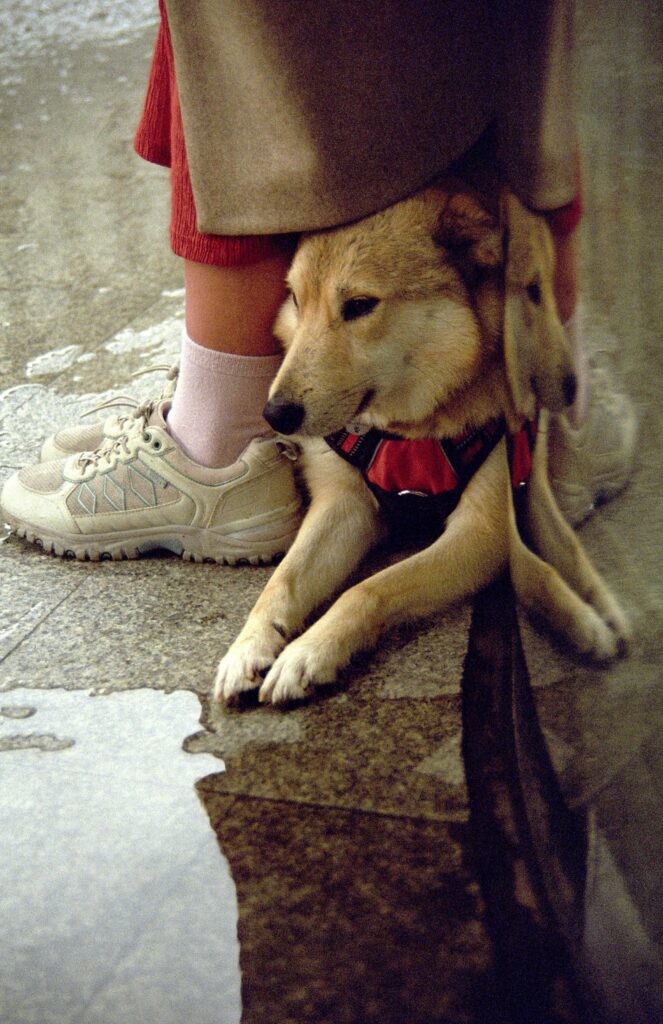As trainers, we often talk about how much we teach dogs, but the truth is they teach us just as much. Every session, every breakthrough, and even every frustrating moment reminds us of what patience, consistency, and gratitude can do.
Thanksgiving season is the perfect time to reflect on what makes the bond between humans and dogs so powerful. Training is not just about obedience. It is about gratitude, growth, and understanding how to bring out the best in each other.
Here are some of the most meaningful lessons dog training can teach us and how those lessons can improve not only your dog’s behavior but your own life as well.
Lesson One: Patience Builds Trust
Good training takes time. Dogs do not instantly understand what we want from them. Each session is a step toward mutual understanding. The more patient you are, the faster your dog learns to trust you.
Consistency in commands, calm energy, and rewarding effort are far more effective than frustration or punishment.
Lesson Two: Communication Is Everything
Dogs communicate constantly, even when they are silent. Their eyes, posture, and tail tell you everything about their emotions and focus. Learning to read your dog’s body language teaches you to lead with clarity instead of confusion.
When communication improves, obedience becomes natural because your dog knows what you expect.
Lesson Three: Small Wins Create Big Results
A 10-second sit-stay might not seem like much, but it represents progress. Every successful repetition builds a stronger foundation. Celebrate those small wins and your dog will become more confident and responsive.
Our Basic Obedience Program focuses on these small but critical milestones, building up from the fundamentals to long-term reliability in real-world situations.
Lesson Four: Gratitude Creates Calm Energy
Dogs mirror their owners’ emotions. When you focus on gratitude instead of frustration, your energy changes, and so does your dog’s. Calm, confident energy encourages respect and balance during training.
For more on maintaining focus and connection in busy environments, see our post on how to keep your dog focused during group activities.
Lesson Five: Obedience Strengthens Bonds
When you invest in obedience training, you are not just creating a well-behaved dog. You are building trust and teamwork. Obedience commands like Sit, Place, and Come teach your dog to look to you for leadership, not to make decisions on their own.
That trust transforms walks, playtime, and even quiet evenings at home.
Checklist: Building Gratitude Through Dog Training
- Practice patience every day, even with small mistakes.
- Read your dog’s body language before reacting.
- Reinforce small successes with praise or treats.
- Keep sessions calm, short, and consistent.
- Celebrate progress rather than perfection.
- Remember that training is about teamwork, not control.
The Science Behind Gratitude and Dogs
The American Kennel Club highlights that owning and training dogs can reduce stress, lower blood pressure, and increase happiness. This is because the connection between dogs and humans promotes emotional well-being and mindfulness.
Dogs remind us to slow down, be present, and appreciate simple joys, whether that is a successful training session or a quiet moment together.
FAQs About Gratitude and Dog Training
- Can dogs sense when their owners are thankful or calm?
Yes. Dogs are incredibly perceptive to human emotions. Calm gratitude and positive reinforcement help create a stable environment that encourages learning. - How can I show gratitude to my dog during training?
Reward your dog with verbal praise, treats, or affection when they succeed. Avoid focusing only on correction. Gratitude strengthens trust. - What if I feel frustrated during training?
Take a break. Dogs can feel tension, which can slow learning. Short, positive sessions are better than long, stressful ones. - How often should I train my dog?
Aim for a few short sessions each day, around 5 to 10 minutes. This keeps your dog engaged and focused without feeling overwhelmed. - Can older dogs still benefit from training?
Absolutely. Dogs of any age can learn new commands, structure, and habits. In fact, senior dogs often thrive with mental stimulation.
Final Thoughts
Being grateful for your dog means being committed to their growth, happiness, and structure. The more effort you invest into training, the stronger the bond becomes.
If you want to build a deeper, calmer connection with your dog through obedience and respect, our Basic Obedience Program is the perfect starting point.
This Thanksgiving, take a moment to appreciate your dog not just as a companion, but as a teacher who reminds you what patience, gratitude, and consistency really mean.
Reach out through our contact page to learn more about how we can help your dog reach their full potential.


